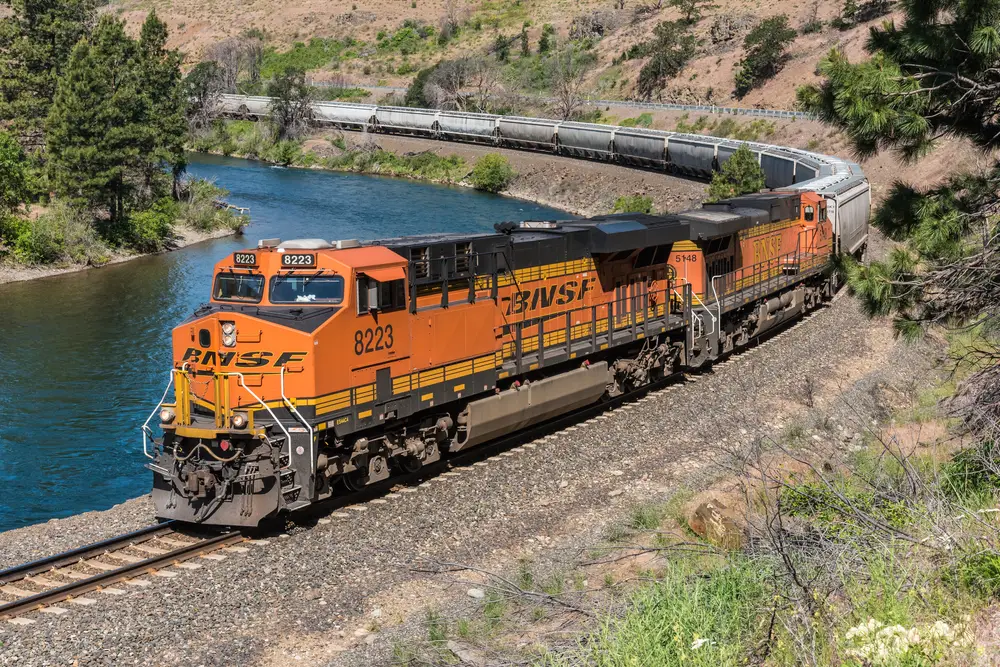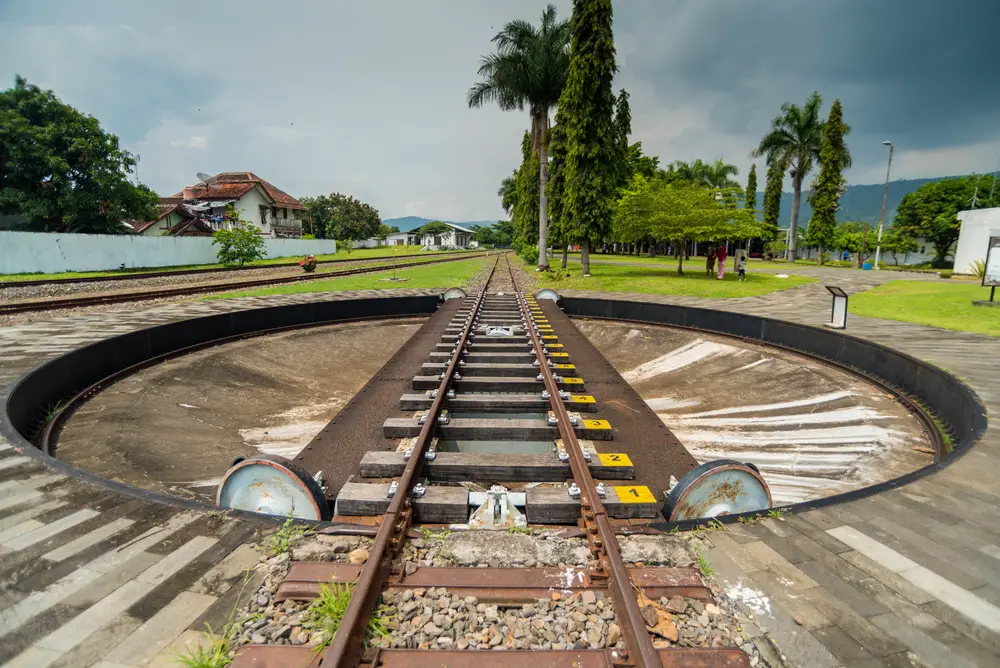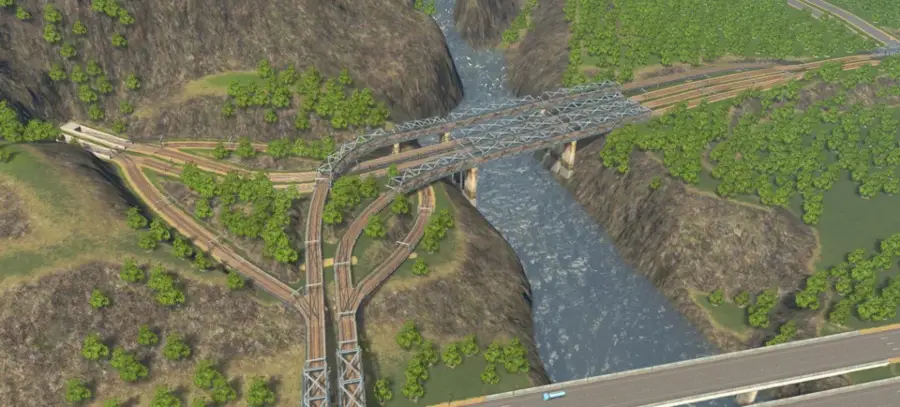
Trains are pretty incredible. They played a massive role in the industrial revolution and continue to be a reliable and cost-effective mode of transport today.
But, if you are like me, you have probably stared at an endless snake of a train, wondering, “how does that thing turn around?”
Trains that operate on a single line, like commuter trains, typically don’t turn around. Instead, when they reach the end of the line, they reverse in the opposite direction. For longer routes, pieces of track shaped like a “Y” or a loop allow the train to turn around.
You may be surprised that there are five standard methods for turning a train around. Some methods are used to turn the locomotive, or engine, around, while others can turn around the entire train.
The Challenge Of Turning Trains Around
Unlike a car, a train can’t just stop and do a quick U-turn and then pop off in the opposite direction.
In fact, turning trains around has been an engineering challenge since the dawn of the rail. But, as technology has improved, we’ve gotten a lot better at turning around.
Here are the 5 different ways a train can turn around.
Steam Trains Were Turned Around Using A Turn Table

If we go all the back to the arrival of the steam locomotive, trains used a really innovative solution to turn around.
Original steam locomotives didn’t perform in reverse as well as they did going ahead. This meant there needed to be more credible options than simply going back up the line. The train, or the locomotive at least, had to be turned around.
To do this, train stations built giant turning tables at the end of the line. So when a train reached a terminal, it would hook off the carts, and drive onto the turn table. These tables were either powered or had to be turned manually by people.
Once the turn table was spun around, the locomotive would drive onto a side rail, or run-around track, next to the carts. This run-around track allowed the locomotive to get back in front of the coaches in the opposite direction.
As you can probably guess, this method was painstakingly slow, and turn tables were expensive to build, maintain and operate.
An Entire Train Can Turn Around With A Balloon Track
What if you wanted to turn the entire train around quickly without decoupling anything? Well, it’s entirely possible.
One way of achieving this is by using a balloon track. Think of the balloon track like a highway roundabout but for a train. A train wanting to turn around simply has to exit off the track and into the balloon track.
This piece of track is basically a giant circle or loop, so when the train has completed the loop, it faces the opposite direction. Then, by flicking the switch, the train exits the balloon track and goes back up the main rail track.
It’s a simple enough concept, but it has some significant drawbacks. The two biggest are the giant space and the massive building cost. Therefore it is the rarest of the more modern solution.
A Train Can Do A Three-Point Turn Using A Wye Junction

Imagine doing a three-point turn with a train like you would with a car. Using a wye junction, you actually can (kind of).
As the name suggests, a wye junction is shaped like a big “Y”. The train leaves the track and enters into one of the arms of the wye. It then proceeds up the straight leg of the wye. Once the whole train is on the leg, a switch is flipped on the junction. Now, when the train reverses, it moves into the opposite arm.
It keeps reversing until it is on the main track and proceeds ahead. And that’s how you do a three-point turn with a train.
Unfortunately, not all wye’s are big enough to turn entire trains. So, in the case of smaller wye’s, the train would drive past the first arm. Then the locomotive is detached. The locomotive then enters the wye and does the three-point turn.
When it exists, it is coupled to the opposite end of the train, which can proceed. Doing it this way requires a much smaller wye, which makes it more cost-effective.
A Run-Around Is A Cheap Way Of Turning A Train Around
The advent of diesel-powered trains saw new locomotives that were equally capable in reserve as they were driving ahead.
This means that you don’t need to turn anything around for the train to go in the opposite direction. Instead, you just need to change the position of the locomotive.
The cheapest way to do this is by adding a section of track parallel to the main track. This section is called a run-around track.
A train can leave the main track and proceed onto the run-around. Once the whole train is off the main track, the locomotive is detached. It then moves ahead, out of the run-around. Once on the main track, the locomotive reverses along the main track to the train’s rear.
Now, you simply hook off the train, and your off home.
Because it is very cheap to build and maintain, a run-around is the most common method for turning around trains on long freight and tourist lines.
The Easiest Way To Turn A Train Around Is Not To
This brings us to the final way of turning a train around. Which is to say, you don’t turn the train around at all. Instead, you simply stop the train and then go back in the opposite direction.
There are two ways this is achieved. A simple and expensive way is to simply add a locomotive to the rear end of the train, facing the opposite direction. So, at the end of the line, the engineer only has to drive the opposite locomotive to go back.
However, there is a cheaper way to achieve this. You can convert the rear cart into a remote station that controls the front locomotive. Remember, modern locomotives can reserve very well, so you could get away with just having one.
The latter method is the most common method used in commuter trains. And it’s easy to see why. There aren’t all that many cons to this method. It’s very cheap, and the turn-around time is negligible.
Here’s a great video on the five methods of turning a train around:
Conclusion
There are five standard methods of turning a train around. Typically, trains aren’t actually turned around. Instead, they proceed in the opposite direction when they reach the end of the line.
Other methods of turning a train around include a balloon track, a wye junction, a run-around track, and a turn table.
